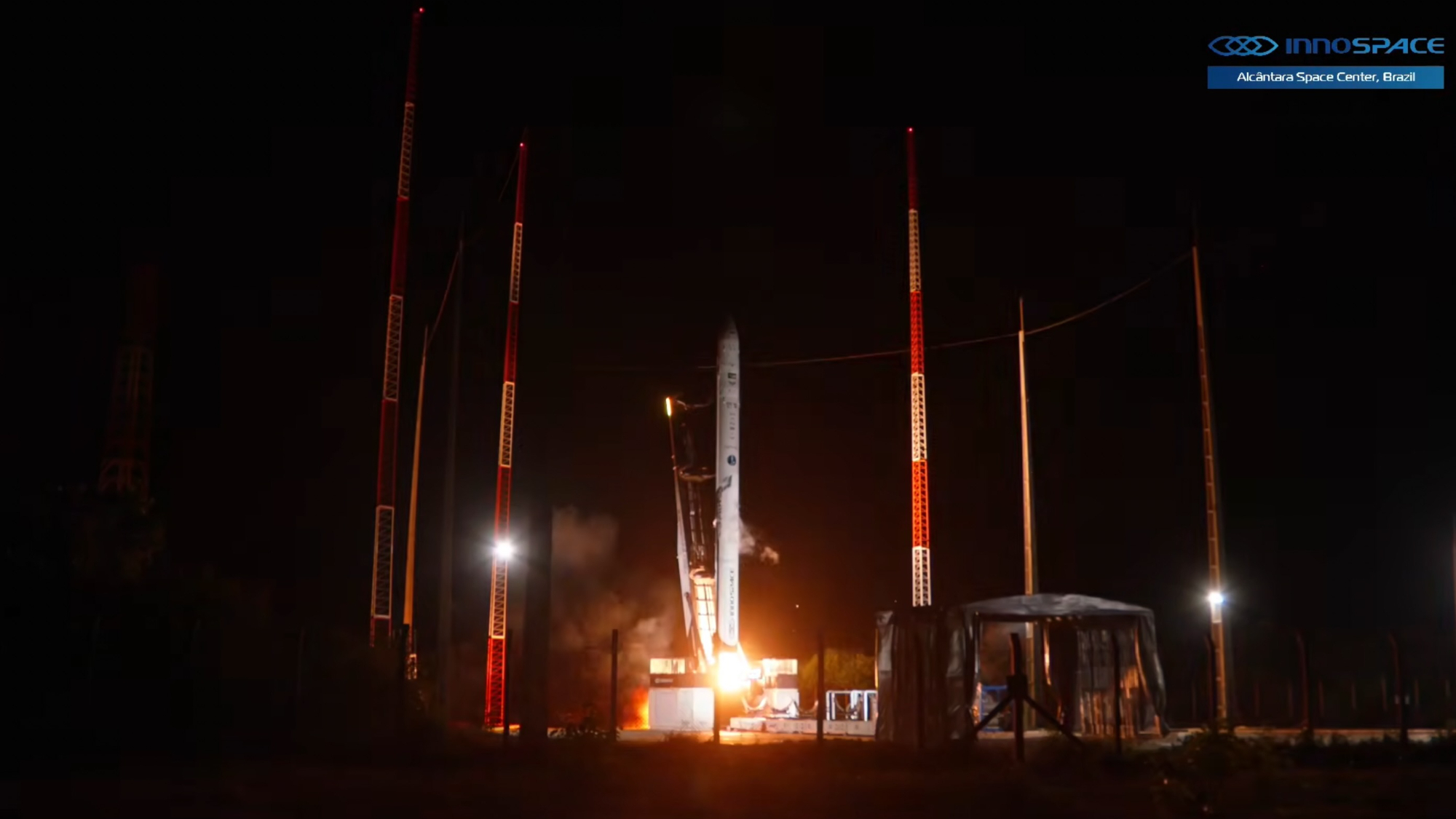NASA: Hubble Space Telecope's Main Camera Offline, Some Science Lost
Thisstory was updated 5:45 p.m. EST.
The Hubble Space Telescope'sprimary camera is offline, with some science capabilities likely lost for good,NASA officials said Monday.
An electricalshort in the backup system for Hubble's AdvancedCamera for Surveys (ACS) pushed the space telescope into a protective "safemode" over the weekend and prompted the formation of an Anomaly InvestigationBoard on Monday, NASA officials said.
Theincident, the third since June to hobble Hubble's ACS camera, occurred at 7:34a.m. EST (1234 GMT) on Jan. 27. Engineers managed to switch the space telescopeback to normal operations, with the exception of the ACS instrument, by Sunday andhope to resume science observations with the observatory's remaining instrumentslater this week.
NASA has convened an Anomaly Review Boardto go over Hubble's latest malfunction, the results of which are expected to bepresented by March 2.
"Obviously,we are very disappointed by this latest event because of the popularity of theACS instrument with astronomers," NASA's Preston Burch, Hubble program managerat the Goddard Space Flight Center (GSFC) in Greenbelt, Maryland, toldreporters today in a teleconference.
It wasHubble's ACS camera's wide field channel, for example, that allowed astronomersto generate Hubble'sUltra Deep Field - the deepest view into the universe to date. But that ACSchannel, and a high-resolution channel used to study stars surrounded by planet-formingmaterial, are likely lost since the latest glitch has cut off power totheir systems, Hubble managers said.
Breaking space news, the latest updates on rocket launches, skywatching events and more!
"We're notoptimistic at all that those will be restored," said David Leckrone, NASA'ssenior project scientist for Hubble at the GSFC. "The saving grace here is thatwe have a superb new wide field camera coming along that was originallydesigned, in fact, to be a back up for ACS in case ACS failed. It was designedto work in tandem with ACS if [it] was full alive."
That new camera- known as WideField Camera 3 - is due to be installed at Hubble during NASA's last space shuttle flight to theobservatory in September2008.
Hubbleengineers hope they will be able to restore partial ACS science capability withits third feature - the Solar Blind channel used recently to study auroras on Jupiter and Saturn - by February to aid NASA'sNew Horizons mission, which is due to make a closeflyby of Jupiter on Feb. 28.
"As soon aswe're confident that everyone has done their homework on that, we could veryhave the Solar Blind operating by the end of February," Burch said. "That wouldbe the hope."
Hubble'sother, non-ACS instruments - the Field PlanetaryCamera 2, Near Infrared Camera Multi-Object Spectrograph, and the Fine GuidanceSensors - are unaffected by the recent glitch.
Hubble'scamera troubles
Hubble'sACS camera has been working on its backup, or Side B, system since the instrument'sprimary Side A electronics encountered a malfunction in June2006. An electronics hiccup a few months later in September again knocked thecamera offline, but the system recovered a short time later.
NASA Hubblemanagers said the most recent glitch is a completely isolated incident and isnot connected to the earlier problems.
"It's verydifferent," Burch said, adding that the current anomaly's signature is verydifferent from those seen last year.
Hubblemanagers have also prepared about six observation surveys that do not requirethe ACS camera just in case the finicky instrument went offline. Those researchprojects will now be implemented while the camera is unavailable.
The ACS anomaly comes just two months before the instrument's projectedfive-year warranty expired, Hubble managers said. Spacewalking astronauts installedthe camera on March 7, 2002 during NASA's STS-109mission aboard the Columbia orbiter. Launchedin 1990, the Hubble Space Telescope has been billed as one of the most valuable astronomicalinstruments of all time and is the product of a partnership between NASA and the European Space Agency.
"It'scertainly been an astounding success as an instrument," Rick Howard, actingdirector of NASA's Astrophysics Division at NASA's headquarters in Washington,D.C., adding that the camera met about all of its initial science objectivesbefore its recent failure.
Because ofthe ACS camera's hard-to-reach location on Hubble and the already packedfive-spacewalk schedule of NASA's final servicingmission to Hubble - Servicing Mission 4 slated to launch in September 2008 -adding a new and complicated repair job to the spaceflight is not an attractiveoption, Burch said.
"ServicingMission 4 is a very full mission with installing new batteries and gyroscopes,installing one of the fine guidance sensors and two new instruments," Burchsaid, adding that the initial plan carries no ACS-related additions to theupcoming Hubble overhaul.
Leckronesaid that the new instruments to be grafted into Hubble during ServicingMission 4 (SM-4) will almost completely restore the telescope's lost ACSabilities, though the new Wide Field Camera 3 will take longer to generate itspredecessor's stunning views of the universe.
"Thesuccessful completion of SM-4 and insertion of Wide Field Camera 3 will take usfully back to not only where we are now, but where we want [Hubble] to be inthe future," Leckrone said.
- Hubble Hugger Eager to Fix 'Mind-Blowing' Telescope
- Video: Fixing Hubble
- Images: Hubble's Greatest Hits
- Hubble Saved: NASA Approves Shuttle Flight to Service Space Telescope
- Hubble Puzzle: How Safe is a Shuttle Servicing Mission?
- Vote: The Best of the Hubble Space Telescope
- The Hubble Image Collection
- All About the Hubble Space Telescope

Tariq is the award-winning Editor-in-Chief of Space.com and joined the team in 2001. He covers human spaceflight, as well as skywatching and entertainment. He became Space.com's Editor-in-Chief in 2019. Before joining Space.com, Tariq was a staff reporter for The Los Angeles Times covering education and city beats in La Habra, Fullerton and Huntington Beach. He's a recipient of the 2022 Harry Kolcum Award for excellence in space reporting and the 2025 Space Pioneer Award from the National Space Society. He is an Eagle Scout and Space Camp alum with journalism degrees from the USC and NYU. You can find Tariq at Space.com and as the co-host to the This Week In Space podcast on the TWiT network. To see his latest project, you can follow Tariq on Twitter @tariqjmalik.
